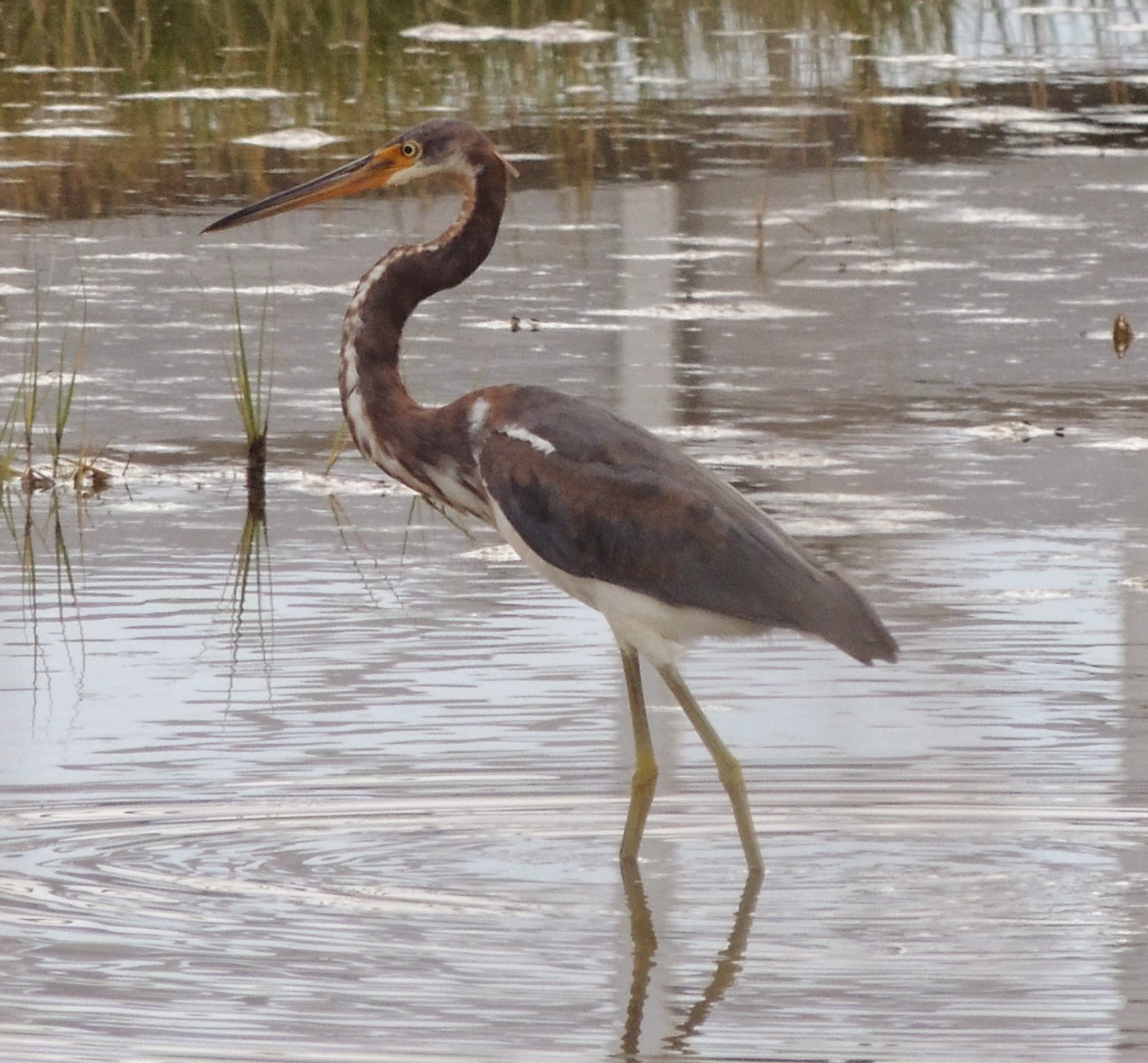We again started the day at Higbee Beach but it was very quiet and I only added
Ruby-Crowned Kinglet to the trip list.
 |
| Downy Woodpecker |
As it was a slow day talk turned to great days of the past and we heard stories of over 75,000 Yellow-Rumped Warblers passing in the 80's. After an hour of nothing much we headed over to Coral Ave. to sea watch. Again nothing new bird wise but we did see another large pod of Bottle-Nosed Dolphins and several Monarch Butterflies feeding up on the budhlia as they migrated south.
 |
| Monarch Butterfly |
We had been seeing these everyday as they migrated and the numbers were building.
We then went to the Hawk Watch Point again and I finally connected with the
Green Heron that I'd missed on the first day.
 |
| Green Heron |
Richard, Alastair and I took a walk along the path whilst the others stayed on the platform and we saw an
Indigo Bunting and a Field Sparrow.
 |
| Indigo Bunting |
 |
| Field Sparrow |
After 'brunch' we spent the rest of the morning at Cape May Meadows which is just along the road from our motel. This is reclaimed land from the former town of South Cape May which was washed away in the 1950's and is now managed for migratory birds in both spring and fall.
Its a circular walk with a mixture of wet meadows and ponds.
Here we added
Common Gallinule, a recent split from Common Moorhen, a
Killdeer plus many
Green & Blue-Winged Teals, Northern Pintails and Shoveler and a Ruddy Duck.
We the called back to the CMBO and in a moment of self indulgence I purchased a new 'scope, an Opticron MM3. To be fair I've been meaning to get a new one as I've been lugging my old Kowa TS1 around the world for the last 30 years. The new one is great and I hardly know I'm carrying it.
We the headed to Shell Bay Ave. for saltmarsh sparrows.
 |
| Shell Bay Ave. |
Here we saw both
Seaside & Saltmarsh Sparrows but not the rarer
Nelson's Saltmarsh Sparrow.
 |
| Saltmarsh Sparrow |
We now went to a new site for the trip and the Wetlands Institute near Stone Harbour where the visitor centre informs visitors about the delicate balance between the land and sea. I was please to see House Finch in the car park as I'd been trying to get a decent view of this species all week.
 |
| House Finch |
On the reserve were a large flock of
Willets roosting on the Islands and also two
Short-Billed Dowitchers feeding in the channel. We also had our best views yet of
Tri-Coloured Heron.
 |
| Willets |
 |
| Short-Billed Dowitcher |
 |
| Tri-Coloured Heron |
A walk along the track to the river produced a Little-Blue Heron, a hunting Osprey, and a few fly-over Flickers. At the river we saw another Clapper Rail and our first Yellow-Crowned Night Heron.
 |
| Juvenile Yellow-Crowned Night Heron |
Back at the visitor centre I went off to find a 'loo' but the centre had closed for the day, I did see this Eastern Phoebe though.
 |
| Eastern Phoebe |
Our last stop of the day was Nummy's Island where we 'scoped the channel from the toll bridge. There was a large group of birds, mostly Great-Black Backed Gulls, Forster's Terns and a few American Oystercatchers and Willets on a sandbar but they were some distance away and by now the light was poor.
We now headed back to the motel to get ready for our evening meal. My beers this evening were Stone IPA and Big Leaf Maple from the Anchor Brew Co.



















































